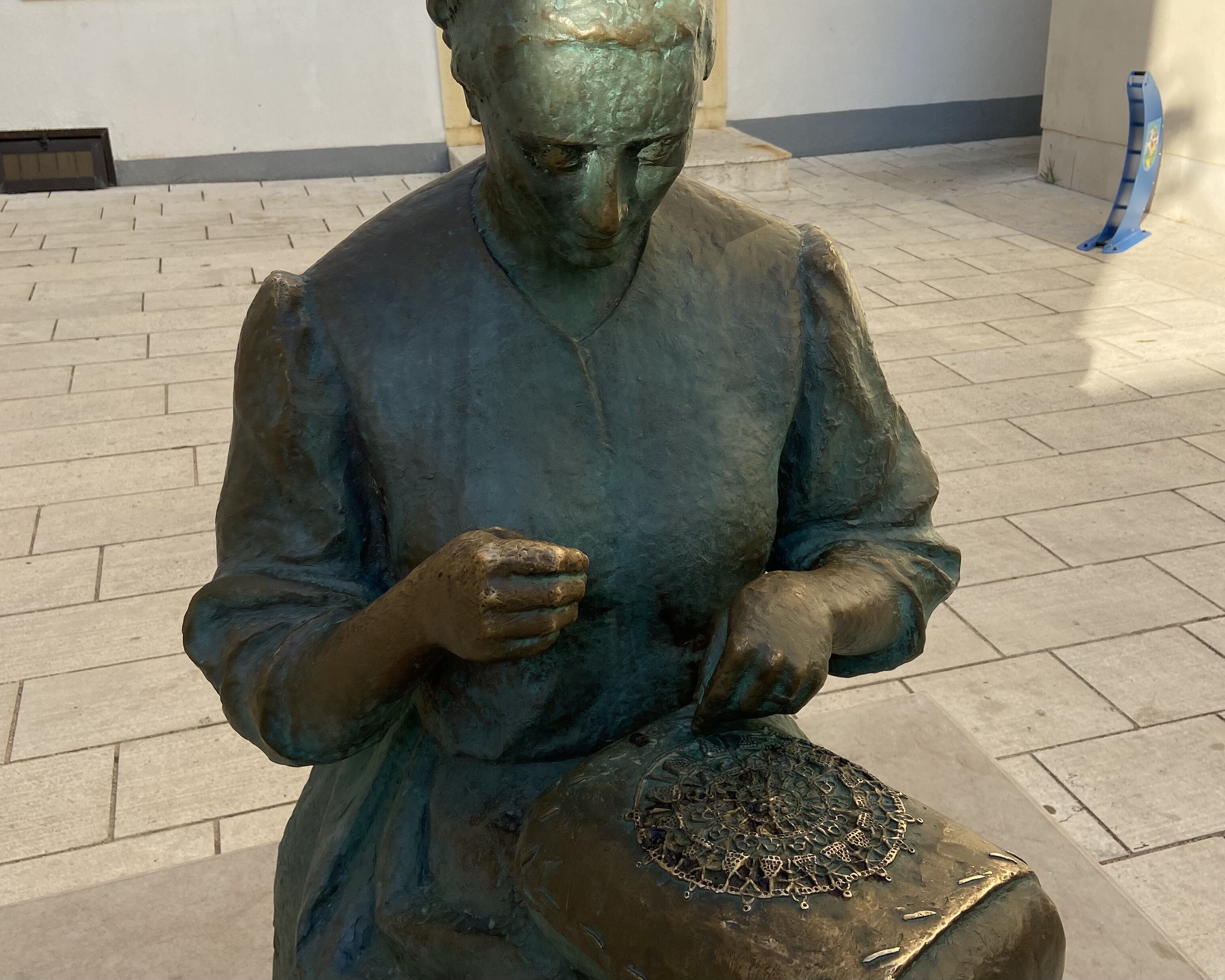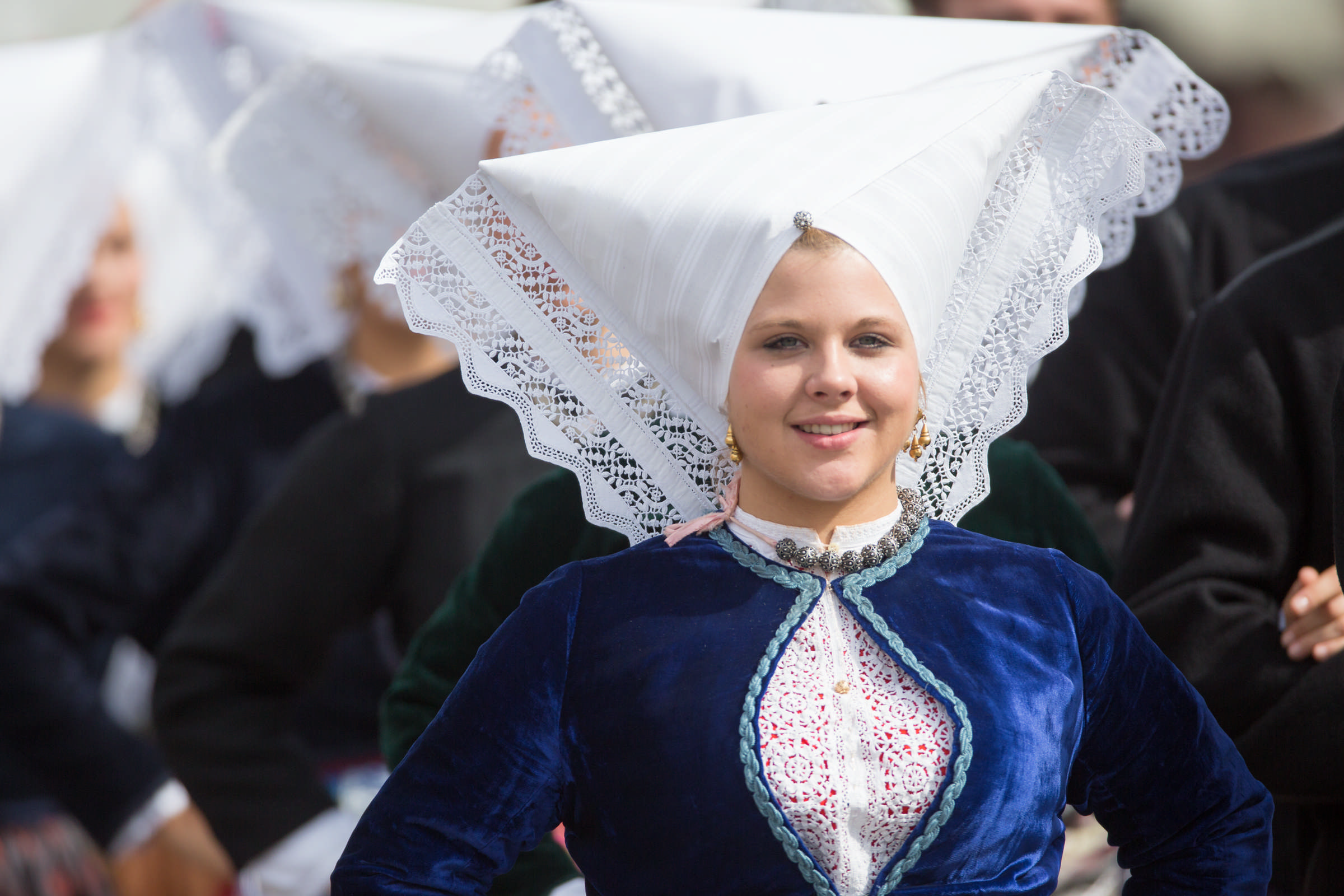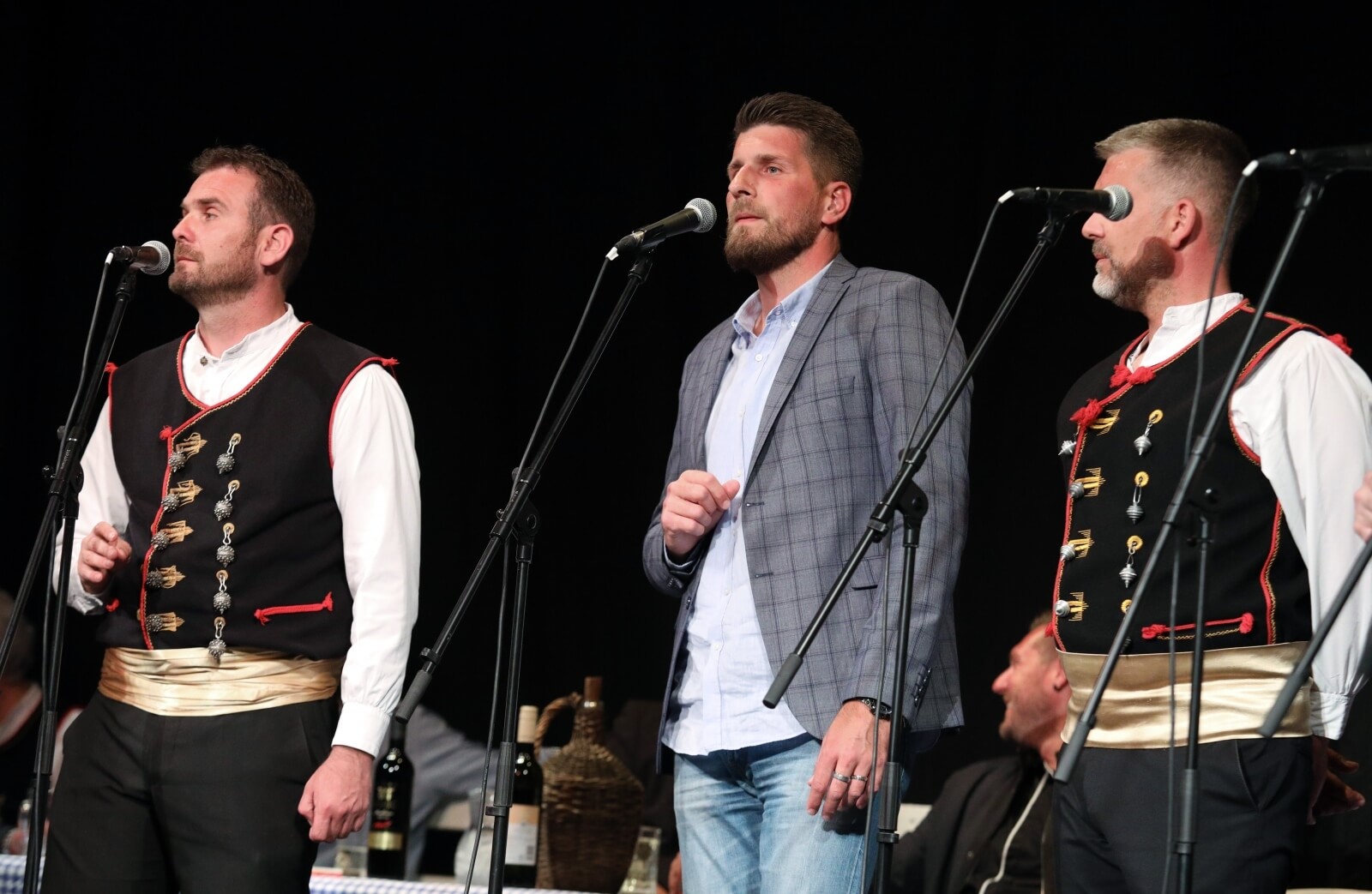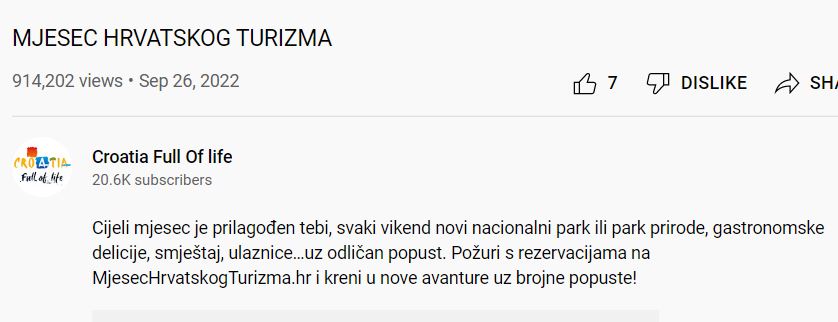Croatian Tourism and the Euro - Has it Become too Expensive?
April 13, 2023 - Croatian tourism has always been an interesting point of discussion. And while the new national currency made some things simpler, it might have come with some complications.
As Poslovni / Glas Istre write, the introduction of the euro in Croatia not only enabled Croats to better understand the relationship to prices in other countries, and to conclude how expensive it is here, but also for foreigners to do the same. So these days in Slovenia, the prices in the neighbouring tourist country, where usually they love going, have become a point of discussion.
They are particularly active in the Facebook group "Kampiranje je zakon", where a photo of a receipt from a restaurant in a Poreč camp was published. A Slovenian woman ordered a glass of wine and two scoops of ice cream and paid 24 euros, that is, 180 kuna.
A similar thing happened to the famous Slovenian restaurateur who runs the Lars & Sven burger bar chain. A few days ago, he visited Umag and shared a photo of a bill from a tavern on Facebook. He paid 28 euros, or 210 kunas, for one serving of calamari.
"Lijepa naša, no thanks. What's worse, the calamari were not from the Adriatic at all," wrote Primož Novak, adding that perhaps the time had come to sober up.
Horrified Slovenians also published the prices of drinks and crepes at ordinary stands. So they noted that a single crepe with Nutella in Poreč cost 6.50 euros, and a beer in one of Poreč's restaurants cost 5.10 euros.
"This is sick. I think we will have to go back to the habit of the old days when we just brought everything with us," the comments read.
And in the end, the Slovenians state that all this is just the beginning, that is, the pre-season. They're wondering what the prices will be during the actual season.
For more, make sure to check out our dedicated News section.
Croatian Tourism Days Kicks Off : Norway Stock Video for Official Promo?
October 6, 2022 - October is Croatian Tourism Month and the National Tourist Board organised its annual Croatian Tourism Days. And so another edition of the Days of Croatian Self-Congratulation has kicked off with a bang. This year's promo video, it seems, needed to be spiced up. So they did what anyone would do. Use stock footage of a train in Norway.
As RTL writes, the Croatian Tourism Month is an action of the Ministry of Tourism and Sports and the Croatian Tourist Board, which is taking place from October 1 to 31 of this year. It will enable all citizens of Croatia to visit and get to know other parts of our country at discounted prices, according to the official website of the mentioned action.
The goal of the project is to encourage domestic tourism and increase tourist traffic in the post-season, according to the description of the project. However, it seems that the way in which they decided to promote the Croatian Tourism Month is interesting. As if there wasn't enough natural beauty and potential in Lijepa Naša, stock video of a train traveling from Oslo to Bergen in Norway was used to illustrate the railway in the promo video.
The official Croatian Tourist Board promo video
The frames are identical, which is blatantly obvious. The only differences are in the colours and contrast, as those who analysed the video noticed. This sparked a discussion on social networks, where the airport used in the video was also criticised.
Whether or not this was a blunder in the promotion of Croatian tourism, you can judge for yourself after watching the original video HERE.
RTL sent an inquiry about the video to HTZ and the Ministry of Tourism and Sports, the reply to be published as soon as they receive one.
What is also quite interesting about this involvement is the total lack of engagement by those who have watched it. Almost one million views, but just 7 likes. Comments are turned off and the info about the official website for the promotion is not hyperlinked. It is a good job that tourists come anyway, without such excellent promotion.
Stay tuned, and make sure to check out our dedicated Lifestyle section for more.
A Closer Look at the UNESCO Lace Traditions on Pag
August 7, 2022 - Having recently visited the island of Pag, as one of my summer stops, I discovered an old tradition that can be seen throughout all the nooks and crannies of Pag town – a quiet and historic destination worth visiting! All things lace can be found around the small town, whether it be on the town’s streets, tourist shops, or inside Pag’s Lace Gallery.
Lacemaking, a cherished tradition in Croatia known as ‘teg’, has been recorded throughout the Mediterranean in the mid-fifteenth century – when small rural communities left a cultural heritage to be passed down generations. The renowned folk-art form has seen patience and skill from women unlike anything else, as their hard-working hands are well acquainted with the delicate lace we now see on the streets of Pag.

Photo: Ailin Khassen
Such beauty requiring an ordinary mending needle and thread, as well as a backing – which is usually a hard stuffed pillow – is created by intangible designs; known to have been handed down from generation to generation. However, it is very likely to find each lace maker adds her own personal touch to her special lacework.
The lace, having been seen as a design on clerical vestments and national costumes (specifically the blouses and headgear, called ‘pokravica’), has now become known as a stand-alone item. Most commonly, it is utilised as a decorative item, such as an adornment on furniture; an embellishment framed and mounted on walls; a detail sewn onto articles of apparel, and hems of curtains and tablecloths.

Photo: Romulic & Stojcic
This painstaking work became renowned and diversified due to the admiration it got many years ago. In 1937, Pag’s lacework has received the gold plaque for high-quality handcraft at the World Exhibition in Paris – aiding in the demand it has seen over the years. Moreover, it is known that Empress Maria Theresa kept a lacemaker from Pag at the court in Vienna. To add, in 2009, these tiny works of art have been registered in the list of intangible cultural heritage by UNESCO – along with the lace in the island of Hvar and the town of Lepoglava!
Therefore, this precious lacemaking tradition is widespread and cherished by many in Croatia. To protect this handiwork, the Town of Pag, with the State Intellectual Property Office, has decided to implement the act of signing a license agreement when wanting to commercialise or use the lace of Pag for souvenirs, and clothing and other items. “With this act, we pay tribute to Pag lace and choose who will use it and in what way,” the director of the Pag Tourist Board, Vesna Karavanić, told HRT.

Photo: Ailin Khassen
With the word of beauty and preciseness of the lace of Pag being carried far, it is no surprise that tourists end up purchasing a piece of handiwork in one of the gift shops in the town of Pag. Additionally, it is a true pleasure to visit the Benedictine nuns of the Monastery of Santa Margherita – who keep the lace craft tradition in Pag as strong as it is. A collection of over a hundred exhibits, which have been collected and preserved for over 150 years, can be found in the Monastery as well. So, do not miss the opportunity to stop in the town of Pag to encounter the renowned lace that is as delicate as a snowflake, but durable enough to withstand laundering!
For more on travel in Croatia, follow TCN's dedicated page.
Plenković: We Could Exceed 70% of 2019 Tourism Results
ZAGREB, 2 Sept 2021 - Prime Minister Andrej Plenković on Thursday commented on the latest ECDC map on which Croatia's coast has stayed orange, saying that foreign tourists had recognized Croatia as a safe destination and that this year's tourism results could exceed 70% of tourism results in the pre-crisis year 2019.
"According to the new ECDC map, the Croatian coast has stayed orange into September. Foreign tourists have recognized Croatia as a safe destination and we could exceed 70% of the tourism results from the pre-crisis year 2019," Plenković said on his Twitter account.
Prema novoj karti @ECDC_EU, hrvatska obala ostala je ? i do početka rujna. Strani turisti prepoznali su ?? kao sigurnu destinaciju te bismo mogli i premašiti 70% turističkih rezultata iz pretkrizne 2019. Odgovornim ponašanjem i cijepljenjem čuvajmo i zdravlje i gospodarstvo ??! pic.twitter.com/uFZY36C4We
— Andrej Plenković (@AndrejPlenkovic) September 2, 2021
He concluded that with responsible conduct and vaccination public health and the national economy were being protected.
According to the latest European Centre for Disease Prevention and Control map, released on Thursday, eastern and central Croatia have turned red while the coast and northern Croatia have stayed orange.
For more on politics, follow TCN's dedicated page.
New Rules: Negative COVID-19 Test for Vaccinated British Tourists Entering Croatia from Monday
July 21, 2021 - New travel rules will take effect from Monday, as all vaccinated British tourists entering Croatia must also present a negative COVID-19 test to enter the country. The same rules apply to tourists from Russia and Cyprus. We're bringing you the details.
A major change is being introduced to enter Croatia. All Britons, Russians, and Cypriots must have a negative test to cross the Croatian border, regardless of whether they have been vaccinated or have contracted and recovered from COVID-19. The change takes effect next Monday, reports Index.hr.
The basis for the changes is the Decision on the temporary prohibition and restriction of crossing the Croatian border, which states that the CNIPH determines the list of countries to which additional rules apply.
The CNIPH has added the United Kingdom, Russia, and Cyprus to the list of countries that require a PCR test not older than 72 hours or a rapid antigen test not older than 48 hours, which was expected.
The CNIPH published the news, which is transmitted in its entirety below.
"To protect health and prevent the spread of COVID-19, additional epidemiological measures have been introduced, which are applied when crossing the border into the territory of the Republic of Croatia to prevent the introduction of new variants of the SARS-CoV-2 virus. Due to the above, there was a quarantine obligation for arrivals from the Republic of South Africa, Brazil, Zanzibar, and India for a period of 14 days, which a negative PCR test can shorten after 7 days.
Since the Delta strain was imported from India, it has now become dominant in the European Union. The list of countries for which quarantine is mandatory remains the Republic of South Africa, Brazil, and Zanzibar. For persons coming from India, the mandatory quarantine after crossing the border is abolished. The obligation to present a negative test result on SARS-CoV-2 is introduced within 48 hours when crossing the border if it is a rapid antigen test or within 72 hours if it is a PCR test, regardless of whether the person has contracted COVID-19 or has been vaccinated.
Due to the worse epidemiological situation in the United Kingdom, Cyprus, and the Russian Federation, as an additional measure for all persons coming from these countries, a negative SARS-CoV-2 test performed in the home country, regardless of vaccination status or recovery from COVID-19, is required before entering the territory of the Republic of Croatia.
The change will be published on the CNIPH website and will take effect on Monday, July 26, 2021," the CNIPH said.
For all you need to know about coronavirus specific to Croatia, including vaccination points and testing sites, make sure to bookmark our dedicated COVID-19 section and select your preferred language.
640 Thousand Tourists Are Currently Staying in Croatia
July 10, 2021 - German media Bild highlights Croatia as a safe destination in the summer, and according to the first data from the eVisitor system, there are currently around 640 thousand tourists in the country, most of them from the markets of Germany, Slovenia, and the Czech Republic.
Renowned German media have been publishing more information about Croatia in recent days, so one of the leading German weekly Die Zeit published an extensive report on the natural beauties of the Kornati until the highest-circulation German tabloid Bild published an extensive and informative report on Croatia, not only highlighting it as a safe destination in times of pandemic and new variants but also mentioning that around 640 thousand tourists are currently in the country, reports hrturizam.hr.
"The beginning of July is the period in which most Germans prepare for summer vacations, and in the coming weeks, school holidays will begin in a large number of German provinces, which will mark the peak of the summer season. In this context, it is very important that in that period Croatia appears in the national media as a desirable and safe holiday destination", said the director of the CNTB Representation in Germany Romeo Draghicchio.
In the article Die Zeita, journalist Nikola Ljubić describes the unique experience of a relaxing atmosphere, beautiful sea, and excellent food on the Kornati archipelago that delighted him in late spring this year, during a study trip organized in cooperation with the Croatian Tourist Board and Šibenik-Knin County Tourist Board. and thanks to the cooperation of the CNTB Representation in Germany with the author of the article. A report on Croatia entitled "Last Minute Check" was published in the online edition of Bild which informs the readers in detail about the current situation in Croatia. The article describes our country as a safe destination and states the conditions for entering Croatia and returning to Germany. This article is the result of the cooperation of the CNTB Representation in Germany with the Bild editorial office, ie with the author Marco Oliver Rühle, who has been following the events in Croatia since the very beginning of the pandemic.
Let us add that Die Zeit is a high-value edition followed by almost 1.7 million readers, and during the corona crisis, its circulation increased by almost 25 percent and now amounts to almost 600 thousand copies. On the other hand, Bild.de is one of the most-read online portals in Germany with a reach of 24 million unique users.
"It is extremely important to adhere to all prescribed epidemiological measures in order to maintain the most favorable epidemiological situation in the country and thus attract as many tourists from our most important emitting markets to Croatia," concluded the director of the Croatian Tourist Board Kristjan Stanicic. According to the first data from the eVisitor system, there are currently around 640 thousand tourists in the country, most of them from the markets of Germany, Slovenia, and the Czech Republic.
For all you need to know about coronavirus specific to Croatia, including travel, border, and quarantine rules, as well as the locations of vaccination points and testing centers across the country, make sure to bookmark our dedicated COVID-19 section and select your preferred language.
About 120 Tourists Arrive in Split from Budapest by Train
ZAGREB, 3 July 2021 - About 120 tourists arrived in Split from Budapest on Saturday on board a train that will be operating on this route three times a week until 11 September.
This is this year's third seasonal train service bringing tourists from central European countries to the southern Croatian Adriatic city, after the Prague-Split route launched on 29 May and the Bratislava-Vienna-Split route established on 19 June.
The management board chairman of the Croatian Railways (HŽ) Passenger Transport company, Željko Ukić, who welcomed the train from Budapest, announced a promotional route between Poland and Split for early September.
"We expect a new train service to be established between Poland and Split next year, and possibly between Poland and Rijeka as well," Ukić said.
Lucijana Natalija Jerković of the Croatian Tourist Board said that an increasing number of tourists were travelling to the Croatian Adriatic coast by train. In the previous years, Hungarians mostly spent their summer holidays in the Zadar area, but now with the introduction of the latest train service their number in Split-Dalmatia County is expected to increase, she said.
For more, follow our travel section.
11.8 Million Overnights in Croatia Recorded in First Half of 2021!
July 1, 2021 - Some good tourism news for the first half of this year, as 11.8 million overnights in Croatia have been recorded, mostly in Istria, Primorje-Gorski Kotar, and Split-Dalmatia County!
After a mostly tourism-less 2020, some reassuring news coming from the first six months of this year.
Namely, during the first six months of 2021, there were 2.6 million arrivals and 11.8 million overnight stays recorded in Croatia, i.e., 54 percent more arrivals and 53 percent more overnight stays than in the same period last year. At the same time, foreign tourists recorded 9.1 million overnight stays, while domestic tourists recorded 2.7 million overnight stays, reports HRTurizam.
These are the first data provided from the eVisitor system, which contains tourist traffic in commercial and non-commercial facilities and nautical charter (eCrew system).
Most tourist overnight stays were realized in Istria County (3.6 million), Primorje-Gorski Kotar County (2.2 million), and Split-Dalmatia County (1.8 million), followed by Zadar County (1.6 million overnight stays), Šibenik-Knin County. 732,000), and Dubrovnik-Neretva County (624,000).
Observing the results of destinations, the highest number of overnight stays since the beginning of the year was achieved in Rovinj (681,000 thousand), Zagreb (427,000), and Poreč (418,000). Looking at the markets, since the beginning of the year, the largest number of overnight stays was recorded by foreign guests from Germany (2.4 million), Slovenia (1.5 million), Austria (987,000), Poland (866,000), and the Czech Republic (681,000). According to the type of accommodation, most overnight stays were recorded in household facilities, hotels, and camps.
During June this year, there were 1.5 million arrivals and 7.9 million overnight stays, or 62 percent more arrivals and 61 percent more overnight stays than in June 2020.
Guests from Germany (1.6 million), Slovenia (1.2 million), and Austria (805,000) spent the most overnight stays in Croatia. Most tourist overnight stays were realized in Istria County (2.4 million), Primorje-Gorski Kotar County (1.5 million), and Split-Dalmatia County (1.3 million), while the most popular destinations were Rovinj (439,000 overnight stays), Poreč (266,000), and Vir (232,000).
For more on travel in Croatia, follow TCN's dedicated page.
What Croatians Find Strange When Living Abroad
June 24th, 2021 - Born and raised in Croatia but has lived abroad for most of her life, TCN intern Marina Kaleb looks at what Croatians find strange when living abroad, speaking from her own experience.
Croatians are very particular with their daily habits and traditions, so when you're raised in a small town or even the capital, moving abroad is a whole different dimension you have to get used to. Of course, every country has its own way of living, but here are some things I have come across when living abroad that are still strange to me as a Croat.
1. Working from a cafe

Pixabay
Various cafes abroad have work-friendly stations such as large tables, charging stations, and student discounts to encourage people to choose their place instead of home or a library. It's very common to see people sitting alone or in groups working on their laptops in a cafe, take Starbucks anywhere in the world, for example. It's kind of glamourized to work in a cafe to get the best of both worlds and fit into an aesthetic but are they even productive? Personally, it took me a while to adjust to this because I was raised in a place where going to a cafe for a coffee is for relaxing, socializing, and forgetting about work. You'll rarely see people working in cafes in Croatia (apart from digital nomads), although it is not considered as strange as it used to be anymore. In larger cities, foreigners enjoy working from a cafe, even in Croatia.
2. Western coffee culture
Another one to do with coffee, as Croats are very particular about it. The Western coffee culture is the complete opposite of what we are used to in Croatia. We like to sit down with a coffee for hours and catch up with our friends, but it's either quick coffee at the cafe or a coffee on the go in most countries abroad. During the Covid-19 outbreak, coffee to go suddenly became an option in most cafes in Croatia, but people still went and sat down somewhere to enjoy it rather than rushing. To this day, sometimes I still feel weird staying at a cafe for hours and only having one coffee because I feel guilty, but it is such a normal thing back home.
3. Fast-paced lifestyle
The pre-pandemic fast-paced lifestyle is extremely strange to someone who comes from a tiny town in Croatia. At home, everything is very relaxed and handled with ease which now sounds extremely strange to me. Perhaps it's the Dalmatian lifestyle of living in peace and simply allowing things to happen at their own pace. However, wherever you go abroad, you will face a fast-paced lifestyle, whether you like it or not.
4. The lack of old romantic songs abroad

Dusko Jaramaz/PIXSELL
Growing up in Croatia, we are used to listening to beautiful, timeless ballads that our parents and grandparents also grew up with. Whether you go to Croatia, a cafe, a restaurant, or even a bar, you are bound to hear old romantic songs that everyone adores. While you still hear old romantic songs abroad, it's not as common. In Croatia, it's completely normal to play romantic and traditional songs in clubs and bars, while abroad, it's mostly pop music. There is nothing like listening to traditional Croatian acapella singing, Klapa, and it's something I really miss hearing!
5. Moving away from family
It's very common for people to remain in their hometown or the region they grew up in their whole life, stay close to family, or even live with their family. Croatia is a collective community, and we like to be close to our family because they always come first. In contrast, many countries focus on their own individual life rather than having family nearby. When it comes to holidays or weekly family dinners, Croats remain very traditional and prefer to spend time with their family, whereas abroad, it's not as common. When living abroad, friends become your family as you form new bonds, but at home, traditions are to be kept.
Is there anything else that you find strange as a Croat living abroad? Let us know your experiences!
For more, follow our lifestyle section.
Split Tourism 2021: Most Guests Expected from July, Over 2,700 Tourists in Split Currently
June 14, 2021 - There are just over 2,700 tourists in Split, though announcements of a promising summer are underway.
Slobodna Dalmacija reports that there are currently 2766 tourists in Split - mostly Croatians, followed by guests from the USA, Germany, France, and Poland, confirmed Alijana Vukšić, director of the Split Tourist Board, which clearly speaks of the current tourist picture in Croatia's second-largest city, which broke records until the coronavirus pandemic.
From the beginning of June until June 13, a little more than 26,000 tourist overnights have been realized, while the number of tourist nights in the same period last year was 5,800, and in 2019 a little more than 100,000, which the people of Split can now only dream of.
The Split Tourist Board director is optimistically looking forward.
"The interest in Split is growing day to day, which is confirmed by tourist traffic, and also the current announcements of travel agents, journalists, and tourists. We have a reason to be optimistic, and I believe there will be growth in tourist traffic in the following months. Still, we need to be very careful because the success of the tourist season depends on the responsible behavior of each individual," says Vukšić.
The current situation in Split in terms of tourist arrivals is not great, as evidenced by the announcements of numerous renters in various groups on social networks. They mostly complain about the lack of reservations. There are many empty apartments in the city center, those in great locations, beautifully decorated.
By reviewing the offer of accommodation on popular online platforms, it is easy to see how some renters struggle because their existence depends on renting or on credit. In despair, they began to significantly lower prices. Some stunning central apartments can be found for as little as fifty euros.
"According to people's reactions and available information, the pre-season was catastrophic in the case of those renters who previously had guests in that period. Only now, in mid-June, something similar is starting to happen that once took place in the pre-season - in Split, some reservations began to appear, and the first guests appeared. This is very weak, considering that our epidemiological situation is excellent and that we thought that our "last minute" would start at full speed. For now, the story is on the respirator, but for at least the last two weeks, the reservations have started to come to life, and there are no cancellations as before," notes Martina Nimac Kalcina, president of the Family Tourism Association of the Croatian Chamber of Commerce.
The first guests move into the apartments in Split almost shyly, but this is far from what the renters hoped for. Nimac Kalcina will say that the current situation in Split on this issue looks like the one that the people of Split used to have in April. And that means - there are some guests, but it's generally poor.
"Attractive apartments in the center of Split, even those with their own parking, are empty. In the last few days, their owners are asked to inquire daily, which usually ends with a reservation, but all this is too little, insignificant. These are apartments in Varoš, Get, Bačvice, Radunica, Spinut, which were once full throughout the summer. In addition, the prices of their rent have been lowered by about twenty percent compared to 2019, so again it is not going," says the president of the Croatian Chamber of Commerce Family Tourism Association.
However, Nimac Kalcina believes that the Split tourist story will soon heat up somewhat, as the planes in full operation towards Split should start returning at the end of June.
"Unfortunately, the pre-season has been lost, and the peak season itself will not be what we hoped for," predicts the long-term volunteer in the family tourism sector.
Split Airport: Traffic growth and the announcements are good
"According to the information from Split Airport, already May, in which the traffic of approximately 33 thousand passengers was realized, from 14 markets where 15 airlines flew, was a good announcement of what awaits us in the next period," said the Split Tourist Board.
The airport expects further traffic growth by the end of June, a total of 80 to 90 thousand passengers, an additional 10 markets, and a total of 35 airlines.
"Confirmations of flight announcements for a period longer than three weeks are ungrateful given the variability of the epidemiological situation in our country and in the world. But if the favorable epidemiological situation is maintained from June to September this year, we can expect approximately 800,000 passengers," Vuksic hopes.
She notes that, according to the Split Port Authority, 151 cruise ships have been announced by the end of the year.
Follow the latest on flights to Croatia HERE and the latest travel updates and COVID-19 news from Croatia HERE.
For more on travel in Croatia, follow TCN's dedicated page.



